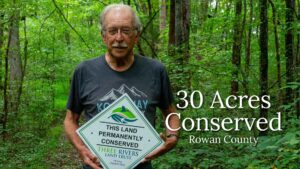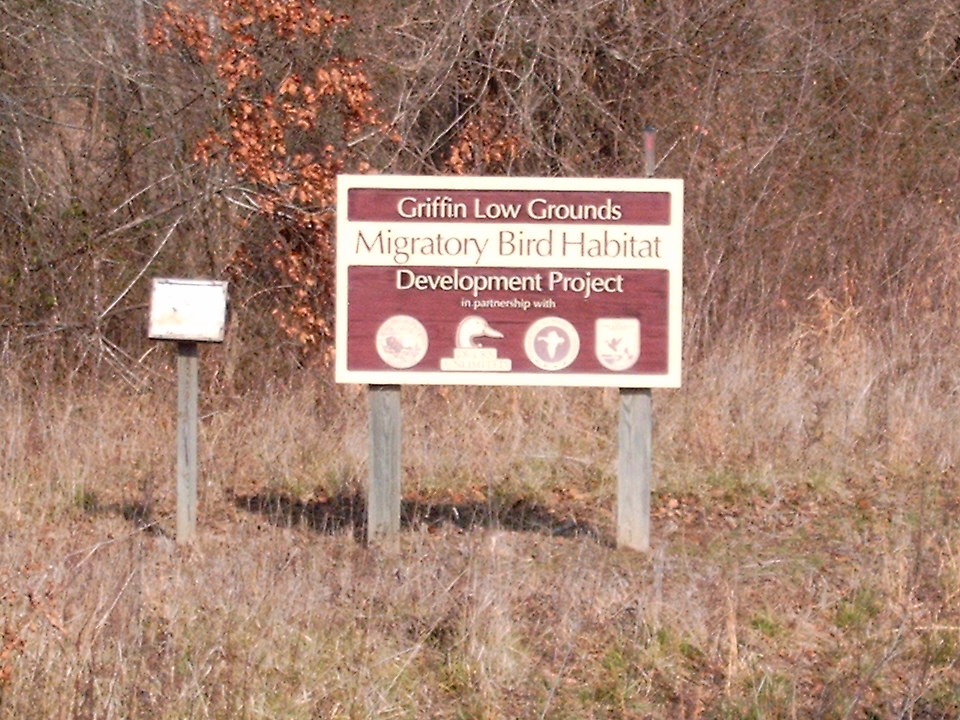
by Crystal Cockman
1/17/2018
On a cool January day a few years ago, I found myself with a friend on a boardwalk walking through a serene forested wetland, with a cool breeze blowing across the water and through the trees. I spotted a red-headed woodpecker searching for lunch on a hollowed out standing snag. I watched as he made his way from tree to tree, enjoying the leisurely pace of the day as much as I was.
On another trip to this same special location with two other friends, I saw a variety of songbirds in a restored native grassland, including indigo bunting and red-winged blackbirds. A drive along Brown Creek resulted in the sighting of several great blue-herons and great egrets, followed by one quick glimpse of a muskrat. On yet another visit, I was able to see hundreds of ducks in flight over a protected wetland on the Pee Dee River. This is the same place I wrote earlier about spotting four wood storks several years ago. This special place is not somewhere private and secret, but is instead open and available to everyone to enjoy.
We have a great resource nearby in the Pee Dee National Wildlife Refuge in Anson County. If you’ve never been, it is really worth a trip. There is a wide variety of wildlife you can observe. It is a particularly great place to go birding, as there are thousands of waterfowl that make the refuge their home in winter months. Pee Dee Refuge includes 8,500 acres, and has a diverse landscape. The distinct habitats include bottomland hardwood forests, pine forests, mixed pine-hardwood forests, croplands, old fields, wetlands and open waters.
In 1934 a local farmer and goose hunter named Lockhart Gaddy retired from hunting, and decided to establish a goose refuge on his private pond. That year, nine wild Canada geese wintered on the pond. The wintering flock steadily grew each year, and by 1954, over 10,000 James Bay Canada geese were wintering on his pond. “Gaddy’s Wild Goose Refuge” became a popular destination for people and geese. In 1952, visitors from 47 states and 11 foreign countries signed the guest log.
The crowds of geese and people at Gaddy’s brought notoriety to Ansonville, NC. The town became a destination for waterfowl hunting and wildlife observation. In the 1960’s, the U.S. Fish and Wildlife Service decided to acquire lands near Mr. Gaddy’s sanctuary. The initial goal was to expand protection of the James Bay Canada goose flock and other waterfowl in the area. Farmlands adjacent to Brown Creek and the Pee Dee River were purchased as part of the conservation effort. Pee Dee National Wildlife Refuge was established in 1963, to provide habitat for wintering waterfowl and other migratory birds.
Unfortunately the James Bay Canada geese no longer flock here in large numbers. But several hundred of them might be seen in a good year. Overall, the refuge continues to be a great place for waterfowl, and over 10,000 ducks and geese winter here each year.
The refuge strives to manage lands for the benefit of migratory shorebirds, wading birds, marsh birds and land birds. These activities include managing wetlands, forests, old fields and open waters to provide habitat for nearly 200 different migratory bird species.
The LandTrust for Central NC is hosting a guided birding trip at the Pee Dee Refuge on January 26th. Don’t miss out on this rare opportunity to observe migratory waterfowl while they make the Pee Dee Wildlife Refuge their winter home. This is a great chance to see migratory birds such as black ducks, ring-necked ducks, mallards, and Canada geese. Spaces are limited! Register here: https://trlt.org/2017/pee-dee-wildlife-refuge-birding-trip/ or call 704-647-0302.